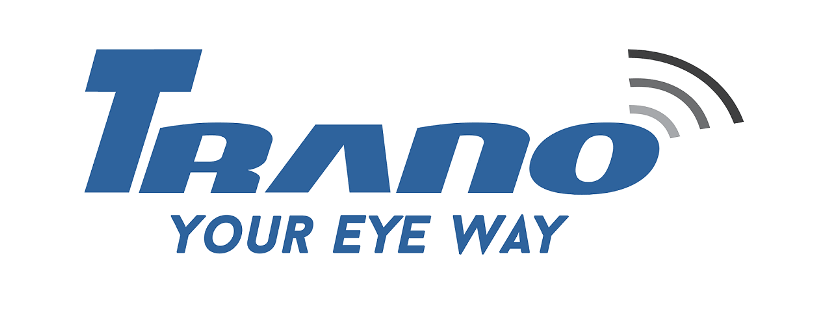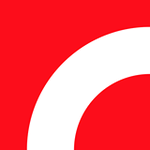Description

Click Maint CMMS

Masterstroke
Comprehensive Overview: Click Maint CMMS vs Masterstroke
Click Maint CMMS and Masterstroke are both Computerized Maintenance Management Systems (CMMS) designed to help organizations manage their maintenance operations, assets, and facility management. Below is a comprehensive overview of each product, focusing on their primary functions, target markets, market presence, and differentiating factors.
Click Maint CMMS
a) Primary Functions and Target Markets:
-
Primary Functions:
- Work Order Management: Streamlines the creation, assignment, and tracking of work orders.
- Preventive Maintenance: Automates scheduling of routine maintenance tasks to prevent equipment failure.
- Asset Management: Tracks the performance, location, and usage of organization assets.
- Inventory Management: Manages spare parts and inventory levels to reduce downtime.
- Reporting and Analytics: Provides insights into maintenance activities, costs, and asset performance.
-
Target Markets:
- Manufacturing: Optimizes machinery uptime and productivity.
- Healthcare: Ensures medical equipment is regularly maintained and compliant with regulations.
- Facility Management: For office buildings, schools, and government buildings to maintain infrastructure.
b) Market Share and User Base:
- Click Maint CMMS is a mid-range CMMS popular among small to medium-sized enterprises (SMEs). It has a modest market share when compared to larger CMMS platforms. Its user base consists largely of companies seeking cost-effective solutions with essential features.
c) Key Differentiating Factors:
- Cost-Effectiveness: Offers a balance of features at a competitive price, suitable for smaller enterprises.
- User-Friendly Interface: Simplified design that does not require extensive training to operate.
- Comprehensive Reporting: Robust analytics feature for companies looking to optimize their maintenance strategies without complex implementation.
Masterstroke
a) Primary Functions and Target Markets:
-
Primary Functions:
- Advanced Work Order Management: Includes mobile access for on-the-go management.
- Predictive Maintenance: Uses IoT and AI to predict equipment failures before they occur.
- Comprehensive Asset Tracking: Real-time location and condition monitoring of assets.
- Compliance Management: Tools to ensure adherence to industry regulations and standards.
- Customizable Dashboards: Allows users to create personalized views and reports.
-
Target Markets:
- Large Enterprises: Industries with complex infrastructure such as oil & gas, utilities, and large-scale manufacturing.
- Multi-site Operations: Corporations with multiple locations requiring integrated management.
- High-Regulation Sectors: Environments where compliance and safety are critical, such as pharmaceuticals and aerospace.
b) Market Share and User Base:
- Masterstroke is a high-end CMMS with a strong presence in large corporations and industries with intricate maintenance needs. It holds a significant portion of the market among high-budget clientele due to its advanced features and customization capabilities.
c) Key Differentiating Factors:
- Advanced Predictive Analytics: Utilizes AI and machine learning to proactively manage maintenance needs.
- Scalability: Highly scalable and suitable for multinational enterprises with extensive maintenance portfolios.
- Customization and Integration: Offers extensive customization and integration capabilities with other enterprise software and IoT devices.
Comparison in Summary
- Target Audience vs. Functionality: Click Maint CMMS is aimed more toward SMEs, offering essential CMMS functions at a reasonable cost, while Masterstroke targets large, multi-site operations with a focus on advanced predictive maintenance and scalability.
- Market Position: Click Maint CMMS has a modest but stable market presence, while Masterstroke commands substantial market share within high-compliance, large-scale operations.
- Differentiators: Cost and simplicity are Click Maint CMMS's main selling points, whereas Masterstroke excels in customization, advanced data analytics, and handling complex, large-scale maintenance needs.
These differences reflect how each solution aligns with the unique needs of its respective target markets, either through affordability and ease of use versus advanced capabilities and extensive customization.
Contact Info

Year founded :
2023
+1 888-344-0509
Not Available
Canada
http://www.linkedin.com/company/click-maint-inc

Year founded :
2021
Not Available
Not Available
Australia
http://www.linkedin.com/company/masterstrokeconsulting
Feature Similarity Breakdown: Click Maint CMMS, Masterstroke
Click Maint CMMS (Computerized Maintenance Management System) and Masterstroke are both software solutions designed to aid organizations in managing maintenance tasks and operations. Here's a breakdown of their features and distinctions:
a) Core Features in Common
Both Click Maint CMMS and Masterstroke typically include these core features:
- Work Order Management: Streamlines the creation, assignment, and tracking of work orders.
- Maintenance Scheduling: Offers calendar and scheduling tools for preventive maintenance.
- Asset Management: Enables tracking of equipment and machinery, including their maintenance history and status.
- Inventory Management: Manages spare parts and supplies inventories, ensuring availability when needed.
- Reporting and Analytics: Provides various reports and analytics tools to assess performance and maintenance activities.
- Mobile Access: Allows field technicians to access tools and information via mobile devices.
- Vendor Management: Facilitates supplier and vendor information management, including contract details and assessments.
- User Management and Security: Offers role-based permissions to secure the system and manage user access.
b) User Interfaces Comparison
-
Click Maint CMMS:
- Generally designed to be user-friendly with intuitive navigation.
- Often features a clean and straightforward interface focused on ease of use, ideal for users with varying technical skills.
- Offers dashboards that visualize key metrics and maintenance performance indicators.
- May provide customizable layout and information panels to align with user preferences.
-
Masterstroke:
- Typically offers a more modern interface with advanced graphical elements.
- Focuses on providing a data-rich environment that may appeal to tech-savvy users.
- Often includes more detailed visual representations and dashboards for in-depth analysis.
- Provides flexibility through configurable interface options to suit specific business needs.
c) Unique Features
-
Click Maint CMMS Unique Features:
- Integration Capabilities: Often excels in integrations with other enterprise systems like ERP, enhancing data flow and transparency.
- Simplicity in Deployment: Generally known for quick deployment processes, which might not require extensive customizations for basic use cases.
-
Masterstroke Unique Features:
- Predictive Maintenance Tools: Sometimes includes advanced algorithms and learning capabilities for predictive maintenance scenarios, potentially leading to cost savings on repair and downtime.
- Advanced Customization Options: Offers deeper customization possibilities, allowing companies to tailor the system to very specific industry requirements or workflows.
Conclusion
When choosing between these products, organizations should consider their specific needs, the skill level of their teams, and existing infrastructure. Both provide robust features for maintenance management, but the decision might hinge on integration needs or the preference for a more customized or intuitive user experience.
Features

Not Available

Not Available
Best Fit Use Cases: Click Maint CMMS, Masterstroke
Click Maint CMMS and Masterstroke are both maintenance management solutions, but they cater to slightly different needs and scenarios within various industries.
Click Maint CMMS
a) Best Fit Use Cases:
-
Types of Businesses or Projects:
- Manufacturing Plants: Click Maint CMMS is excellent for manufacturing environments where asset management and preventive maintenance are critical. This includes auto, electronics, and heavy machinery manufacturing facilities.
- Facilities Management: Ideal for companies that manage large facilities or campuses, such as universities, hospitals, or corporate office spaces, ensuring everything from HVAC to plumbing is efficiently maintained.
- Public Utilities and Infrastructure: Suitable for managing complex utilities and infrastructure like water treatment plants or electrical grids, where streamlined maintenance and asset tracking are vital.
- Transportation and Fleet Management: Businesses that rely on a fleet of vehicles, whether trucks, buses, or public transport, benefit from the real-time tracking and maintenance scheduling features.
-
Features and Benefits:
- Preventive Maintenance Scheduling
- Work Order Management
- Asset Tracking and Management
- Vendor Management
- Integration with IoT devices for real-time monitoring
d) Industry Verticals and Company Sizes:
- Industry Verticals: Manufacturing, facilities management, utilities, infrastructure, and transportation.
- Company Sizes: Medium to large enterprises that require robust asset management and maintenance scheduling capabilities. Smaller businesses in asset-intensive industries can also benefit due to the scalability of the platform.
Masterstroke
b) Best Fit Use Cases:
-
Types of Businesses or Projects:
- Project Management Companies: Especially in the construction or engineering sectors, where comprehensive project planning and execution tracking are necessary.
- Energy and Natural Resources: Companies in the oil, gas, and mining sectors that require stringent maintenance protocols and project management.
- Large-Scale Infrastructure Projects: Suitable for managing projects with multiple stakeholders and complex logistics, like bridge or highway construction.
-
Features and Benefits:
- Integrated Project Management Tools
- Budgeting and Cost Management
- Resource Allocation and Optimization
- Progress Tracking and Reporting
- Risk Management Features
-
Scenarios:
- When a business needs a combination of maintenance management and project management capabilities.
- Organizations requiring detailed tracking of costs and resources across various projects.
d) Industry Verticals and Company Sizes:
- Industry Verticals: Construction, engineering, energy, and resources, as well as any industry undertaking large, complex projects.
- Company Sizes: Typically suited for larger enterprises or projects with considerable scope and complexity. However, it's also beneficial for mid-sized companies needing advanced project management aligned with operational maintenance.
Summary
- Click Maint CMMS is optimal for environments where asset and maintenance management are the primary concerns, and it’s highly applicable to keeping physical assets operational.
- Masterstroke caters to projects with significant planning and execution needs, bridging the gap between maintenance and comprehensive project management. This makes it ideal for large-scale, resource-intensive projects.
Both products have their strengths, and the choice between them largely depends on whether the primary need is operational maintenance or integrated project management.
Pricing

Pricing Not Available

Pricing Not Available
Metrics History
Metrics History
Comparing teamSize across companies
Conclusion & Final Verdict: Click Maint CMMS vs Masterstroke
When evaluating Click Maint CMMS and Masterstroke, both offer valuable features for computerized maintenance management systems (CMMS). However, the choice between them depends on the specific needs and priorities of the user.
Conclusion and Final Verdict
a) Best Overall Value
Considering functionality, ease of use, customer support, and cost, Click Maint CMMS offers the best overall value for most users. It provides a comprehensive set of maintenance management features at a competitive price, making it a suitable choice for various businesses, particularly those looking for a reliable and cost-effective solution.
b) Pros and Cons
Click Maint CMMS:
-
Pros:
- User-Friendly Interface: Intuitive design that facilitates easy navigation and quick adoption by teams.
- Scalability: Offers features that cater to businesses of various sizes, allowing for growth without needing to switch systems.
- Comprehensive Features: Provides essential CMMS features, such as work order management, preventive maintenance scheduling, and asset tracking.
- Excellent Customer Support: Known for responsive and helpful customer support.
- Competitive Pricing: Offers good value for money, making it suitable for budget-conscious companies.
-
Cons:
- Limited Customization: May not offer as many customization options for specific industry needs compared to some competitors.
- Integration Limitations: May have limited integrations with certain third-party software, which could be an issue for organizations relying on specific tools.
Masterstroke:
-
Pros:
- Advanced Analytics: Offers robust reporting and analytical tools that can provide deep insights into maintenance performance.
- High Customization: Allows for significant customization to suit specific industry needs and workflows.
- Integrations: Generally better integration capabilities with several other business and operational tools.
- Industry-Specific Solutions: Often provides tailored solutions for specific industries, enhancing efficiency and effectiveness.
-
Cons:
- Cost: Typically, Masterstroke may come at a higher price point than Click Maint CMMS, potentially limiting its appeal to smaller organizations.
- Complexity: The extensive features and customization options can lead to a steeper learning curve, potentially requiring more training and onboarding time.
- Customer Support: Some users report slower response times and less comprehensive support compared to Click Maint.
c) Specific Recommendations
For users trying to decide between Click Maint CMMS and Masterstroke, consider the following:
-
Budget & Company Size: If you are a small to medium-sized business with budget constraints, Click Maint CMMS offers an excellent balance of features and affordability. For larger enterprises with complex needs and a higher budget, Masterstroke may provide the necessary advanced capabilities.
-
Industry Needs: Companies that need highly specialized or industry-specific solutions might benefit more from Masterstroke due to its customizable options. On the other hand, organizations with standard maintenance management requirements can find Click Maint sufficient.
-
Integration Requirements: If integrating with existing tools and systems is crucial for your operations, assess the specific integration capabilities of both products. Masterstroke often provides better integration flexibility.
-
User Experience & Training: For teams seeking a straightforward and user-friendly tool with minimal training demands, Click Maint CMMS is preferable. Conversely, if your team can invest time in learning a more complex system for additional features, Masterstroke could be considered.
Ultimately, the decision should align with your organization’s specific operational needs, budget constraints, and long-term business goals. Evaluate trial versions and engage with sales representatives from both companies to better understand which product fits your unique requirements.
Add to compare
Add similar companies



